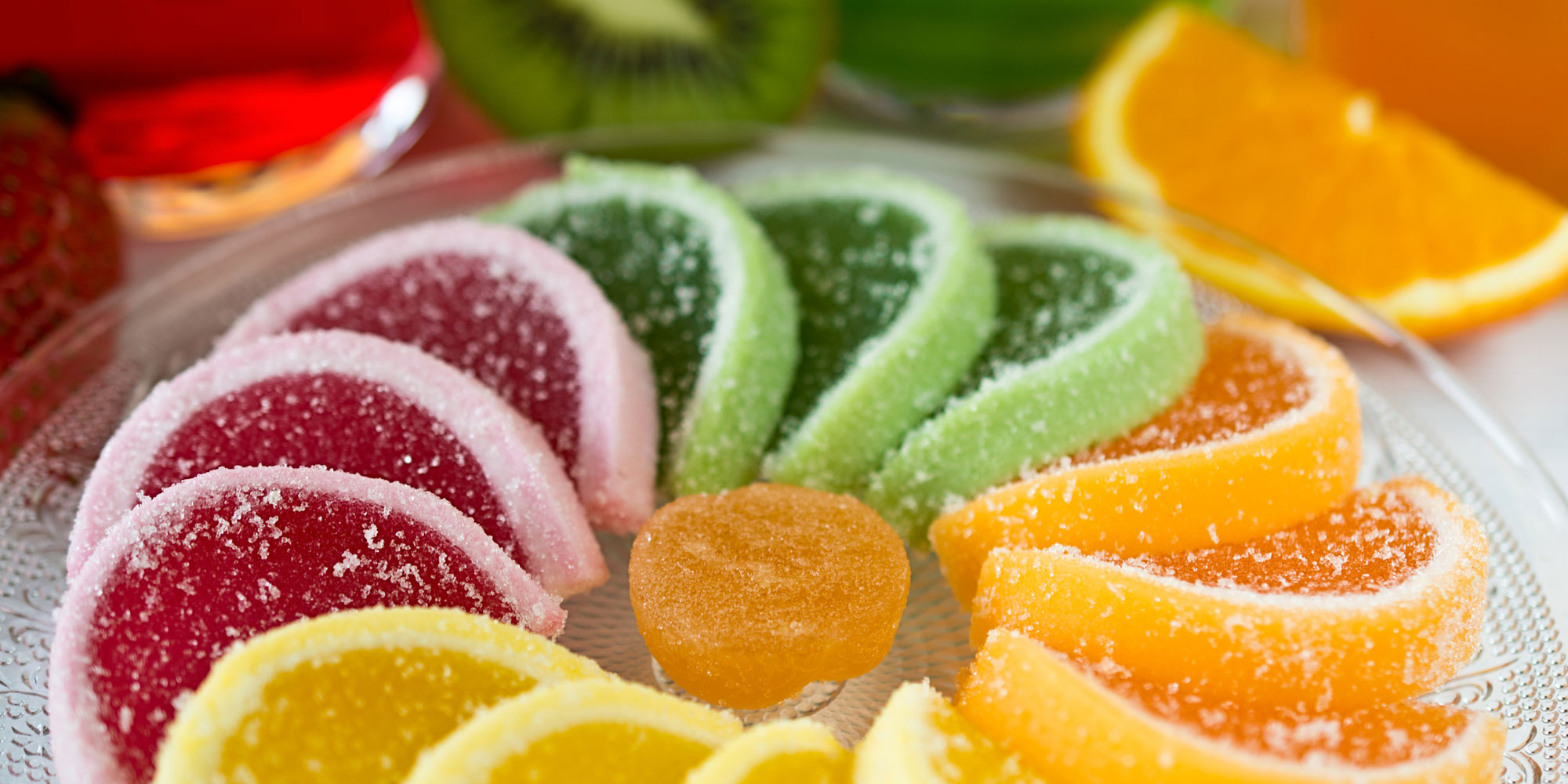Glycerol in the food industry
By Jillian Jastrzembski

We’re back again with this extremely versatile compound, glycerol. Previously, we discussed the essential benefits of glycerol in skin care formulations. Today, we’ll talk about glycerol as a food additive.
As a reminder, glycerol (IUPAC name propane-1,2,3-triol) has 3 hydroxyl groups on a 3-carbon chain. Those hydroxyl groups give glycerol a high capacity to absorb water from its surroundings, a property that becomes important for many applications.
(Side note: sometimes we also call this molecule glycerin. While the names are often used interchangeably, technically glycerol refers to the pure compound, whereas glycerin refers to chemical products of at least 95% glycerol.)
We mentioned that one of the traits that makes glycerol so desirable as a skin product is that this compound is found naturally in skin. We’re about to see that the same goes for food. Glycerol is found naturally in fats and oils, though not in its pure form.
Triglycerides, a type of fat, consist of a glycerol back-bone attached to 3 fatty acids. Logically, when triglycerides are broken down, they yield glycerol and 3 fatty acids. Shorter chain triglycerides, such as those found in coconut oil, yield higher amounts of glycerol compared to longer chain triglycerides, such as those found in olive oil. Nonetheless, glycerol is found in all fats and oils, whether animal or vegetable.
So it makes sense that glycerol was first discovered accidentally when a scientist name K. W. Scheele heated olive oil in the presence of lead monoxide. He noticed the resulting substance, which we now know as glycerol, had a slightly sweet taste. During the next century, other chemists were able to identify the empirical and eventually the structural formula of glycerol as C3H5(OH)3.
The point is, because glycerol is found in fats, it is a molecule the body is used to metabolizing. That bodes well for its digestibility and toxicity in humans. Glycerol has GRAS status (Generally Recognized as Safe) under the FDA, and is considered suitable for use in products meant for consumption. Although it is found within triglycerides, a type of fat, glycerol itself is metabolized as a carbohydrate.
So we already know how fats lend themselves to flavor and nutrition in food. But just how is this fat-derived carbohydrate used in the food industry?
For starters, glycerol is slightly sweet and viscous. So it can be added to bulk up the taste, viscosity, and mouthfeel during product development. Another key feature of glycerol is that is soluble in both water and ethanol, two common matrices in the food industry. That makes it really easy to incorporate glycerol into various food products. For example, it might be added to soft drinks, or syrups to improve mouthfeel and flavor. The solubility of glycerol also makes it useful as a solvent or carrier. It can be used as a relatively neutral, non-alcoholic, and non-toxic vehicle to add flavorings or other substances into food products.
Because it is such a good humectant, adding glycerol to food has a similar preservative effect as adding NaCl, table salt. Humectants not only increase the water-holding capabilities, they can also help to manage water activity. This contributes to antimicrobial action. Adding glycerol to food can inhibit the growth of bacteria and food borne pathogens. For example, incorporating glycerol into jerky resulted in a product with lower water activity.
In many cases, glycerol is not added to food directly, but rather derivatized to form other useful food additives. One common derivative of glycerol is glycerol monolaurate, which is a common surfactant, preservative, and emulsifier.
To make glycerol monolaurate, glycerol is reacted with lauric acid. Basically, you’re reattaching a fatty acid to the glycerol back-bone. But instead of adding 3 fatty acids, you’re only adding one, so you get a monoglyceride, instead of a triglyceride. So, we still have a compound that is safe and familiar to the body, but we can use it in different ways. For example, glycerol monolaurate can be added to flour to improve appearance and quality, or used to improve the mouthfeel and texture of ice cream.
Another common derivative of glycerol is polyglycerol, essentially just a repeating chain of glycerol units. These, along with polyglycerol esters, are often used the food industry as humectants and emulsifiers.
Summary
Glycerol is a ubiquitous compound in the food industry, and for good reason. It is found naturally in all fats and oils as the backbone of the triglyceride molecule. It is easily recognized and metabolized by the body as a carbohydrate, and therefore it is not a toxicity concern. Glycerol has a slightly sweet taste, viscous consistency, and is easily soluble in both water and ethanol. These properties make it an excellent additive to improve mouthfeel and sweetness, or as a carrier for other compounds such as flavorants. It is also a useful humectant and antimicrobial agent. Glycerol is commonly derivatized to obtain other food additives that can act as preservatives and emulsifiers, such as glycerol monolaurate, polyglycerol, and polyglycerol esters.
References
Azelee, Nur Izyan Wan, et al. “Glycerol in food, cosmetics and pharmaceutical industries: basics and new applications.” Int. J. Sci. Technol. Res 8 (2019): 553-558.
Morrison, Lowen R. “Glycerol.” Kirk‐Othmer encyclopedia of chemical technology (2000).

